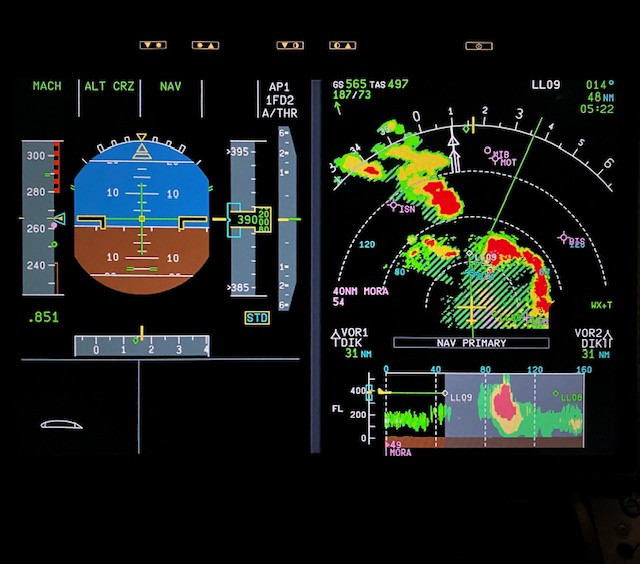The simple answer is yes, commercial airplanes can fly over hurricanes. However, the reality of navigating flights around these formidable weather systems is far more complex and fascinating, involving sophisticated technology, meticulous planning, and the expertise of highly trained professionals. Hurricanes, also known as typhoons or cyclones depending on their location, are more than just heavy rain; they are vast, powerful storms that demand respect and careful avoidance from aviation.
Hurricanes are born from warm ocean waters and atmospheric instability, typically during hurricane season, which spans from June to November, peaking in August. These storms are characterized by intense low pressure, powerful winds, and torrential rain. Unlike typical thunderstorms that pilots routinely navigate around, hurricanes are massive, long-lasting, and present a significantly greater challenge to air travel. Even a Category 1 hurricane can stretch hundreds of miles and pack winds exceeding 74 mph.
When hurricanes develop, airlines and air traffic control centers swing into action, prioritizing the safety of passengers, crew, and aircraft. This involves critical decisions about flight schedules, airport operations, and in-flight route adjustments. Aircraft scheduled to stay overnight at airports in the path of a storm are relocated to safer locations. But what happens when a flight is already airborne and encounters a hurricane’s path?
The Art of Storm Dodging: Navigating Around Hurricanes
During flight, pilots continuously monitor weather reports and forecasts, working closely with flight dispatchers to choose the safest and most efficient routes. Modern aircraft are equipped with sophisticated weather radar systems that play a crucial role in hurricane avoidance. These radars display different intensities of precipitation and turbulence, allowing pilots to “see” the storm structure ahead.
On the radar screen, areas of potential turbulence and convective activity are often indicated in different colors, such as green, amber, and red, signifying increasing levels of intensity. Pilots are trained to navigate around these areas, especially the red zones, which represent the most severe weather. Sometimes, routes may be adjusted to fly over the top of storm clouds, which is indicated on radar by a “hatched” pattern. This signifies that while the flight is passing above convective clouds, some light turbulence, or “chop,” might be encountered.
The goal is always to ensure passenger comfort and safety. By skillfully interpreting radar data and communicating with air traffic control, pilots can effectively “dodge” the most turbulent and hazardous parts of a hurricane system, ensuring a smoother and safer flight experience. For a deeper dive into the technical aspects of turbulence and storm avoidance, resources from pilot communities and aviation publications offer valuable insights.
 A weather radar image displaying a hurricane system, illustrating the severe weather conditions airlines must navigate around.
A weather radar image displaying a hurricane system, illustrating the severe weather conditions airlines must navigate around.
Hurricane Preparedness: Impact on Airports and Flight Schedules
Major airlines often rely on hub airports located in large cities to connect passengers across their networks. Hurricanes can severely disrupt these crucial hubs. If a hub airport is impacted by a hurricane, the consequences can be far-reaching, leading to flight cancellations, delays, and significant logistical challenges. Restoring normal operations at a major hub after a hurricane can take several days, impacting passengers and cargo transportation significantly.
The effects of severe weather extend beyond passengers, impacting airline personnel at all levels. Flight dispatchers, crew schedulers, and maintenance teams work tirelessly to minimize disruptions and restore flight schedules as quickly as possible. Flight crews also need to be flexible, as their schedules are often subject to change during these unpredictable events.
It’s important for passengers to stay informed and prepared when hurricane season approaches. Airlines provide updates and travel advisories, and passengers should pay attention to these announcements and be ready to adjust their travel plans if necessary.
During natural disasters, pilots are also keenly aware of Temporary Flight Restrictions (TFRs) and updates to Notices to Air Missions (NOTAMs). These restrictions, issued by aviation authorities like the FAA in the U.S., can change rapidly during emergency response efforts and are critical for ensuring safety and coordinating airspace usage. Pilots utilize electronic flight planning tools and communication with air traffic control to stay updated on these dynamic situations.
Severe weather, including hurricanes, remains the most significant cause of flight delays in regions prone to these storms. However, the aviation industry employs a vast network of highly trained professionals and advanced technologies to ensure that passengers reach their destinations as safely and efficiently as possible, even in the face of nature’s most powerful storms. The ability of planes to fly over hurricanes, or more accurately, navigate safely around them, is a testament to the advancements in aviation and the unwavering commitment to safety within the industry.
